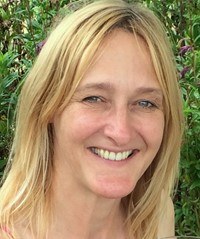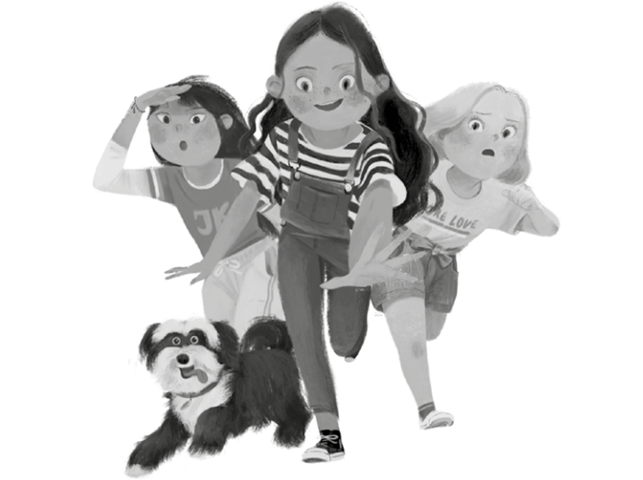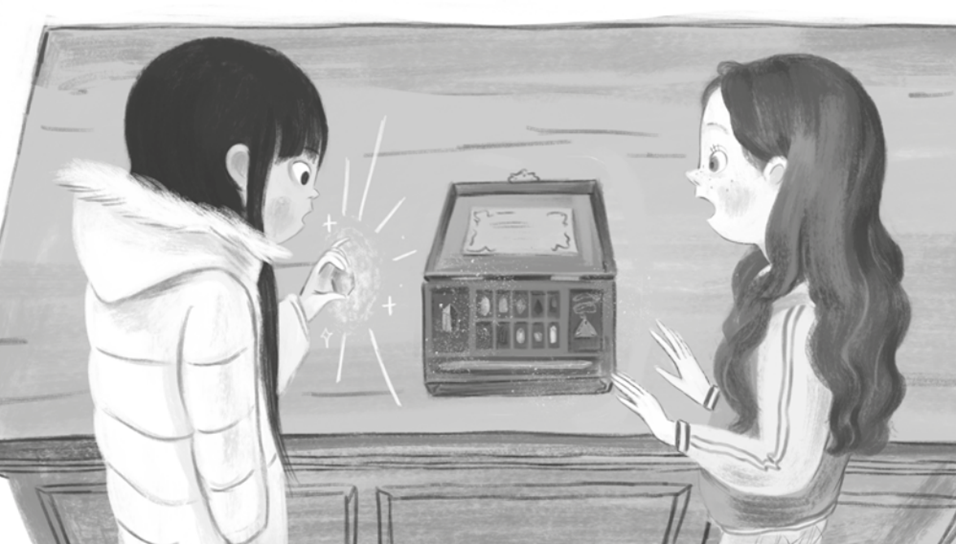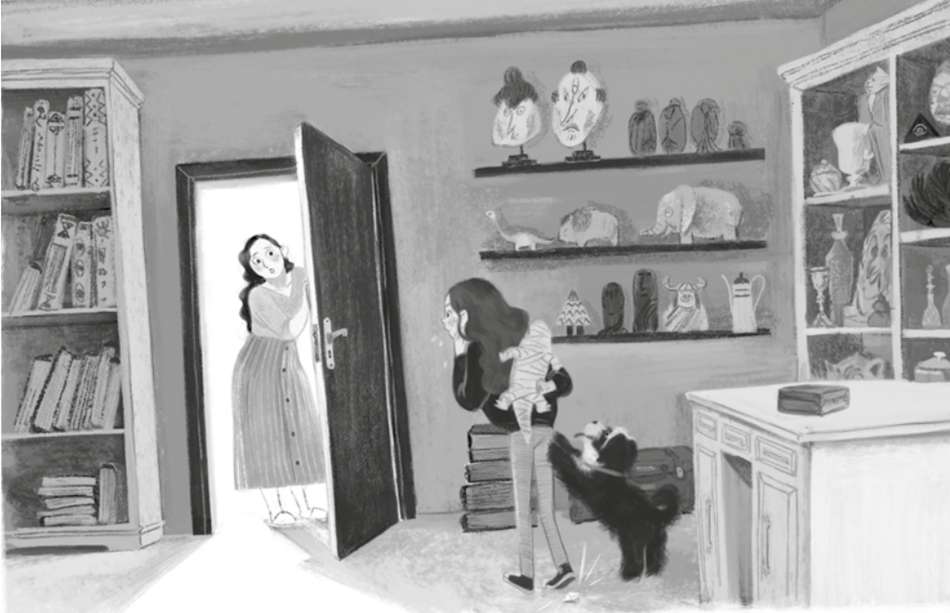Linda Chapman


About Author
Linda Chapman's new series for young readers, Magic Keepers, takes us to a house filled with curios - and a magical secret! Before before becoming a full-time writer, Linda Chapman had many jobs including being a teacher, stage manager, book-seller, university researcher and dog trainer. She is now the best-selling author of over 200 books for 5–14 year olds. Her series include My Secret Unicorn and Star Friends, among many others. She lives with her family in Melton Mowbray, Leicestershire and, when she's not writing, she enjoys reading and horse riding. Find her at: lindachapmanauthor.co.uk
Interview
Magic Keepers: Crystal Chaos (book 1) (Little Tiger Press)
October 2022
Read a Chapter from Crystal Chaos
Linda Chapman, bestselling author of series including My Secret Unicorn and Star Friends, took a short break from her writing to talk to us about her brilliant new series, Magic Keepers, for ages 7+, about a girl, Ava, who discovers that her new home has an incredible secret; a collection of curios that can come to life!
In the first book, Crystal Chaos, Ava and her friends have to stop a dangerous creature from escaping into the nearby town. Linda Chapman tells us more about the story and gives a short reading, as well as introducing the two dogs who helped inspire one of its characters:
Q&A with Linda Chapman
1. What kinds of books do you enjoy writing, and how many books have you written?
I have had 265 books published since 1999 (and I wrote at least 10 other books before getting published - it took me seven years to get published so I always say to aspiring writers to stick to it and don't give up!).
I love writing about magic and friendship, and I particularly enjoy writing series where characters discover magic in their everyday lives. I loved reading books like that when I was younger because they made me feel magic was real and made me believe it could happen to me. The more relatable the children in the books were the better, which is why I now like to combine magic plots with everyday storylines about friendships and family relationships.
I like everything in my books to be completely recognisable and realistic apart from the magic the children are trying to keep secret. Although in saying that, I do sometimes write series that are set in a fantasy world but even in those series the characters have problems and concerns that are hopefully recognisable and easy to relate to.

2. Why do you enjoy writing for younger readers?
So many reasons! Writing for younger readers, particularly the 7-10 age group, is so much fun! I love writing about unicorns, mermaids, magic animals, magic adventures and saving the world from bad magic and that's very easy to do when you're writing for younger readers because it's the kind of subject matter many young readers enjoy.
I really like having main characters who are 10/11 years old. Children that age can be so enthusiastic, resourceful, creative and are so open to possibilities. It's a time of change, they're caught between childhood and teenagehood. They have more freedom than they had when they were younger and they are learning to deal with things themselves rather than relying on adults. Their friendships are intense, falling out with friends is devastating, they may have conflict with siblings or problems emerging at school such as dyslexia and they are facing the challenges of moving on to secondary school.
They are growing up fast and yet a small part of them often still believes or wants to believe in magic. It's an amazing, complicated, fascinating age and it's definitely my favourite age to write about.
3. Why do you feel series fiction is so important for this age group?
Series fiction has had a huge influence on me both as a reader and as a writer. When I was growing up I would read and reread series by Enid Blyton, E Nesbit and Barbara Sleigh over and over again as well as every pony series I could get my hands on. I loved picking up the next book in a series and being able to find out more about characters I knew and being able to follow them on another exciting adventure.
Series fiction for younger readers is usually very accessible and fast-paced and so can be great for engaging newly independent readers. The books are usually easy to read but can really hook children in and once they've finished one, there's another book to read straight away which keeps them going. In my experience, young readers also often like turning books into their own make-believe game, carrying on the stories with their own imaginations and series fiction lends itself very well to that kind of imaginative play.
Nothing makes me happier in my writing life than hearing about a child who didn't like reading but after reading one of my books has wanted to read more of the series and then gone on to become an avid reader of lots of different books or a child who has read one of my series and then gone on to make their own game up with the characters or write their own stories.
4. Do children ever give you ideas for new stories?
In some ways yes and in some ways no. The magic in my books, whether it's a being a mermaid with legs, having a secret animal friend who teaches you how to do magic or having a box of magic crystals and being responsible for preventing magic from causing chaos, nearly always come either from ideas I had when I was younger, or from me thinking about what would be an amazing thing to happen if you were 10/11.
However, the friendship and family issues my characters face in their lives often do come from talking to children, both my own and friends' children. Ava, my main character in Magic Keepers, is dyslexic, just like one of my daughters, and I was keen to show that while dyslexia undoubtedly does present hurdles in a school setting, a person with dyslexia can also be incredibly good at things people without dyslexia might struggle with, like being able to see the big picture and being able to spot patterns and having a very good visual memory. All great talents to have when you are responsible for solving magical mysteries!
5. Can you tell us about Magic Keepers and the first book in the series, Crystal Chaos?
In Crystal Chaos, Ava and her mum move into a crumbling Victorian villa that Ava's mum has inherited. In the house there is a collection of unusual artefacts - curios - and Ava soon makes an astonishing discovery - they're all magic.
While navigating a new school and making friends, Ava sets out to find out more about the curios and the box of magic crystals that she also finds in the Curio Room. When the spirit inside a mummified baby crocodile wakes up, Ava, her dog, Pepper and her new friends, Sarah and Lily, have their hands (and paws) full learning how to use the crystals and trying to recapture the ancient crocodile before it causes all kinds of trouble and chaos.
In every book in the series, the magic inside a different curio wakes up and causes all kinds of problems. The girls - and Pepper - who have appointed themselves 'the Magic Keepers' have to solve the mystery of which curio is causing the trouble and stop it before the magic gets out of control and the secret of the curios is revealed to the world!

6. Crystals and curios - what inspired this combination?
When I was planning Magic Keepers, I knew I wanted to write about a friendship group of three quite different girls and I wanted the girls to be able to do some kind of magic - but I also knew it had to be a different kind of magic from the magic I'd used in my other series. The more I thought about it, the more crystals just seemed the right choice.
I think crystals are fascinating - they look beautiful and they are thought to have different properties such as being able to help heal, balance, protect, dispel negative energy etc. I'd used crystal magic a little bit in my Star Friends series and so in Magic Keepers it was great to have the chance to bring crystals centre stage.
As for the curios, I knew I wanted to write about the girls having to stop magic from getting out of control because magic going haywire can be both exciting and funny. I'd been playing around with different ideas for the magic when I read an article on The Lawrence Room at Girton College, Cambridge, a college museum containing collections of artefacts that have been added to by people over the years.
The artefacts are from many different periods of history and range from mummified baby crocodiles to jewellery. It made me wonder what it would be like for a character if they or their parent inherited a private collection of curios and from that point it was just a small step to thinking 'and what if all the curios were magic...?'
The original title for Magic Keepers was 'Ava and the Museum of Magical Curiosities', however, that was much too long and so it became 'Magic Keepers' instead!
7. In the first book the children discover a mummified crocodile - why did you decide to start with this creature?
As soon as I read about the Lawrence Room having a mummified baby crocodile, I knew straight away that it was going to be the first object that would cause trouble for the three girls. I have seen mummified animals in museums and a baby crocodile seemed perfect for the story; not quite so dangerous as a fully grown adult crocodile but still quite scary enough!
I loved the idea of it exploring Ava's house while she slept and gradually getting bigger and bigger. I could see the humour in that and I could also easily imagine what the illustrations might look like. I think Hoang Giang, the Magic Keepers' illustrator, has done an amazing job.

8. What about the crystals which play an important part in this story - did you need to research them for this book?
I love doing research for my books and I did a lot of reading about crystals, the properties they have and how people use them. To start with I was going to have twenty magic crystals in the book but it was just too many so I had to cut the number down. Although the crystals in Magic Keepers are based on real crystals, the ones in the book are magical and so have extra powers that normal crystals don't have; their power can also be amplified when they are fitted into a pendant on a special necklace. But their power can also run out - something Ava and her friends discover to their cost at a very inconvenient moment in Crystal Chaos!
9. What kinds of curios will you introduce in your other Magic Keepers stories? What other adventures is Ava going to have?
I have so many ideas for the different curios that will feature in the series, it's been a struggle to choose between them all! The curios Ava looks after either have magic spirits inside them that can wake up, or they contain magic that can affect people.
I don't want to say exactly which curio causes the problems in each book but there are many different objects that are all magic in some way: a tarnished hand mirror; an ostrich fan; a cat-headed figurine; a stone gargoyle; a beetle brooch; a curse cup; a plaque with a primitive face carved into it; a vial of seeds; a bronze wrist cuff; a stone with writing on and more… So many different objects and so many different types of magic to cause trouble and chaos!
10. Do you have any strange curios in your own home?
I do have strange curios in my house. I used to work in the theatre as a stage manager and over the years collected strange objects that could be used as props - things like an old ostrich egg; carved wooden boxes; figurines; an old magnifying glass; vintage shoes and hatboxes.
The house I lived in until recently was also incredibly old - it was just a small stone cottage but it had its own small tower that people thought might have been built on top of the remains of an ancient temple. It also had an indoor pond, carvings of a pagan green man, a gargoyle, a priest hole and it was rumoured there was a secret passage that led to the manor house next door and that the Holy Grail had once been hidden in the vicinity. I find history fascinating and an endless source of inspiration!
11. What keeps you at your desk - coffee, breaks, or word counts?
I don't actually have a desk, I work on the sofa or in bed or at my kitchen table. As long as I have my laptop I can work anywhere. I drink lots of tea but probably it's having a busy schedule and not always much time for writing that really makes me sit down and write when it's my writing time.
My books at the moment are generally between 15,000-20,000 words long. I used to try and write 3,000 words a day, every day, but I have quite a busy, unpredictable life with a horse, dogs, teenage children, one of whom isn't very well, aged parents and writing about 14 books a year, so I find it works best to write a first draft in very intense bursts, usually at a weekend.
I'll try and get Chapter One started on a Friday - the first chapter always takes me ages because I'm far too good at procrastinating - and then I'll get on and write without stopping apart from brief breaks to eat and get a few hours sleep for Saturday and Sunday. By Monday, I'll hopefully only have the last chapter to do before I then start editing and improving it.
In the week, between Monday to Friday, I usually concentrate on doing things I can stop and start more easily like polishing up the first draft until I'm happy with it, writing second or third drafts, going through copy editors' comments, proof reading, working on the various series I write with my lovely writing partner, Julie Sykes, and developing plot outlines for future books.
12. Where do you do most of your writing? What would be the perfect 'writer's shed' for you?
I can write anywhere. I did once have the equivalent of a writer's shed - an annexe that was my study - but I never went in there, I always ended up writing in my bedroom or the lounge or kitchen. I do have a study now but it's only really for keeping books and files in. I seem completely incapable of writing at a desk!
 Magic Keepers: Crystal Chaos
Magic Keepers: Crystal Chaos
